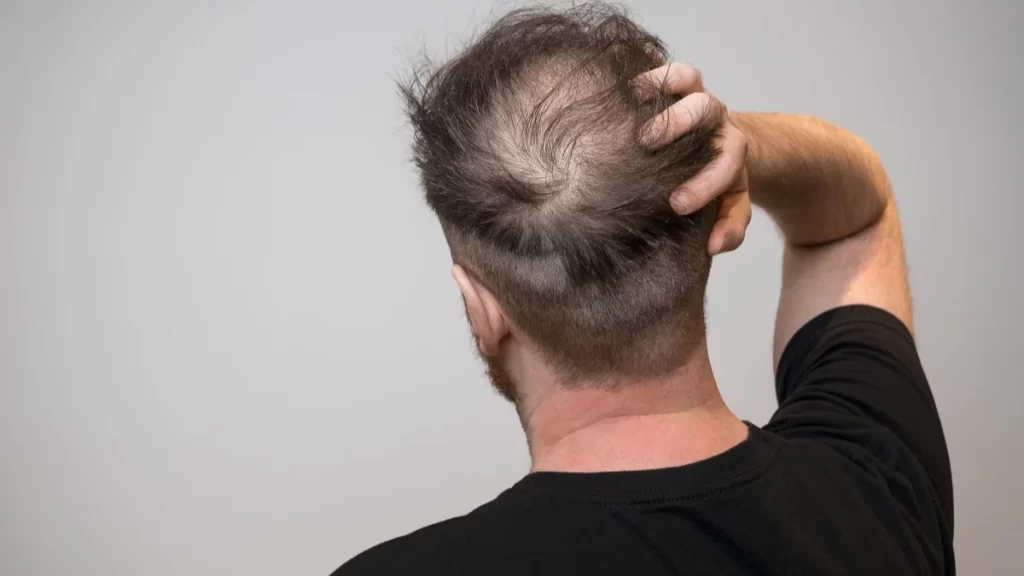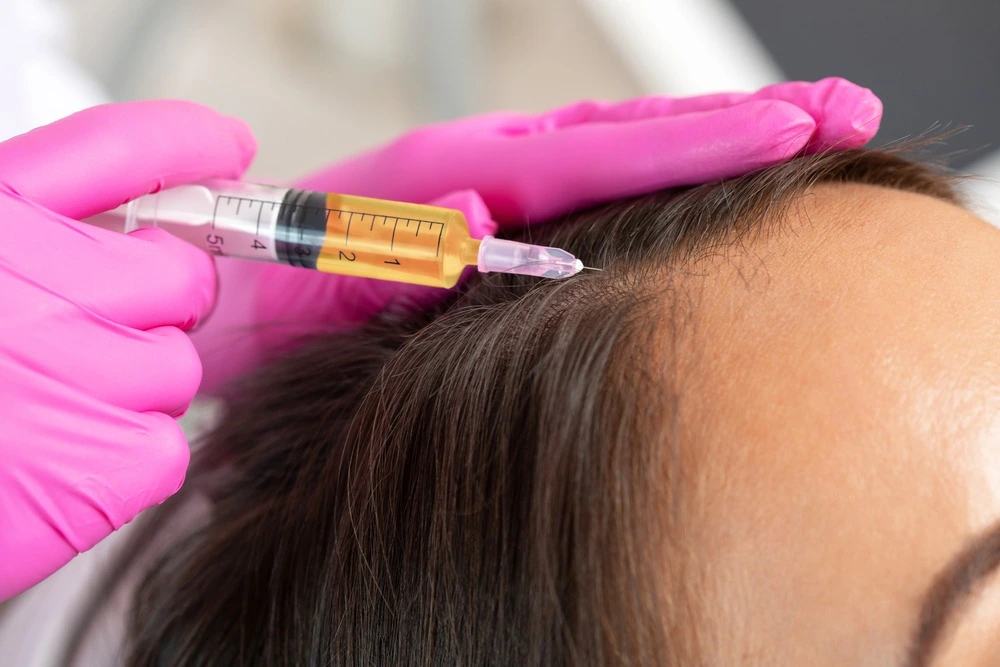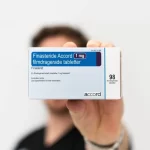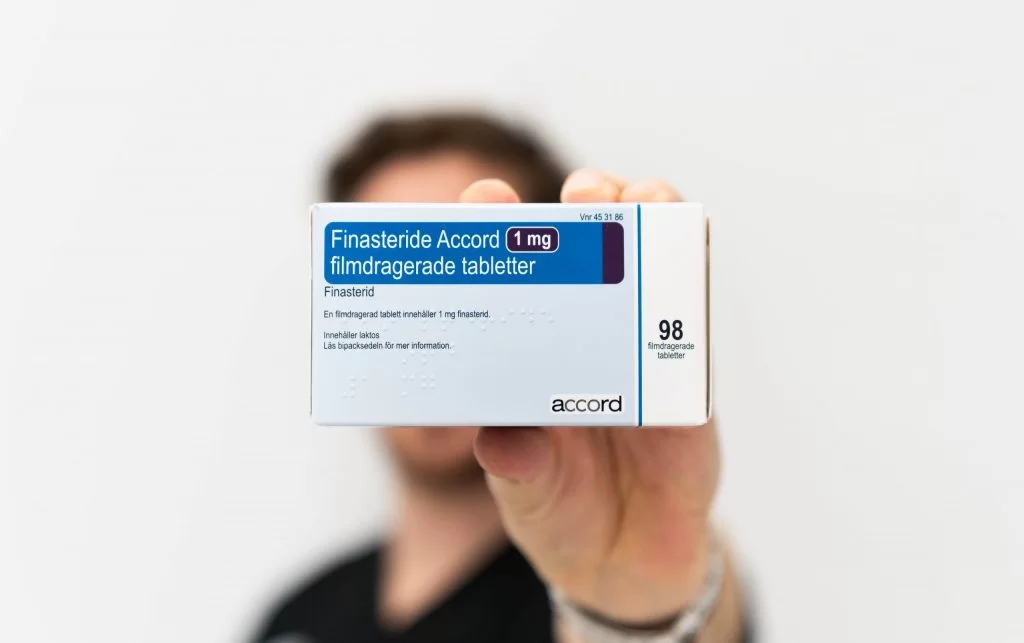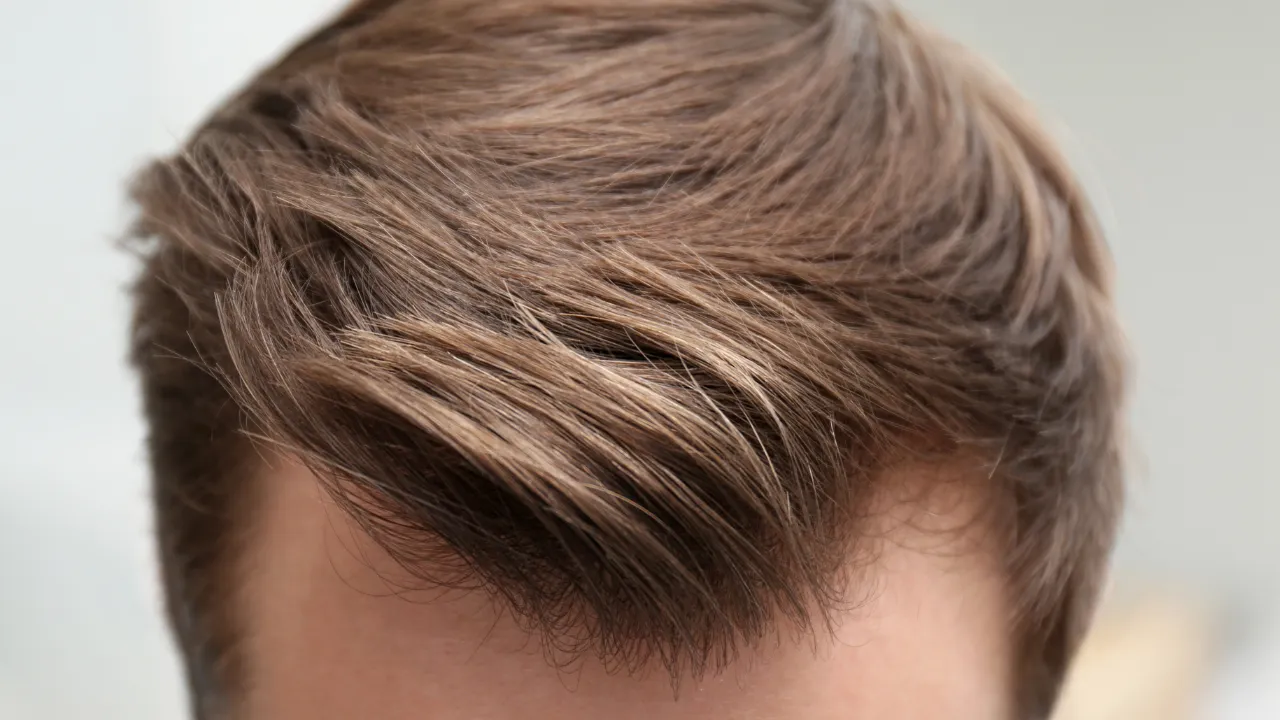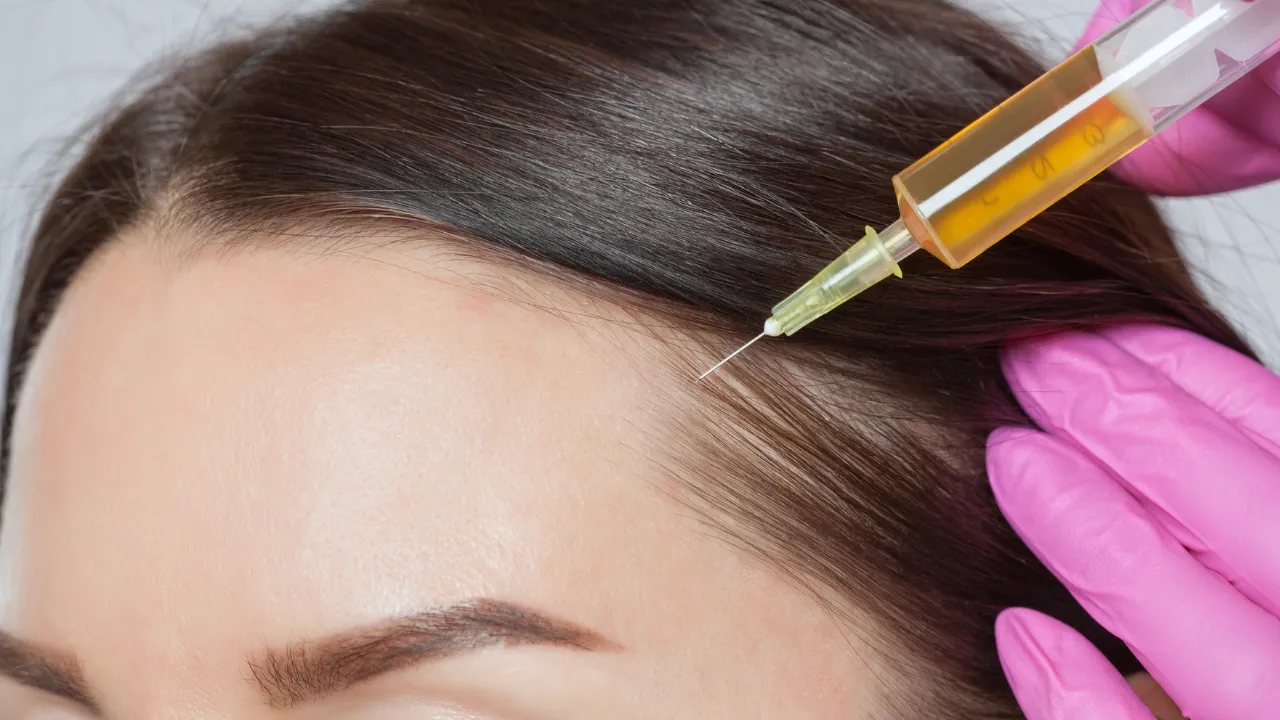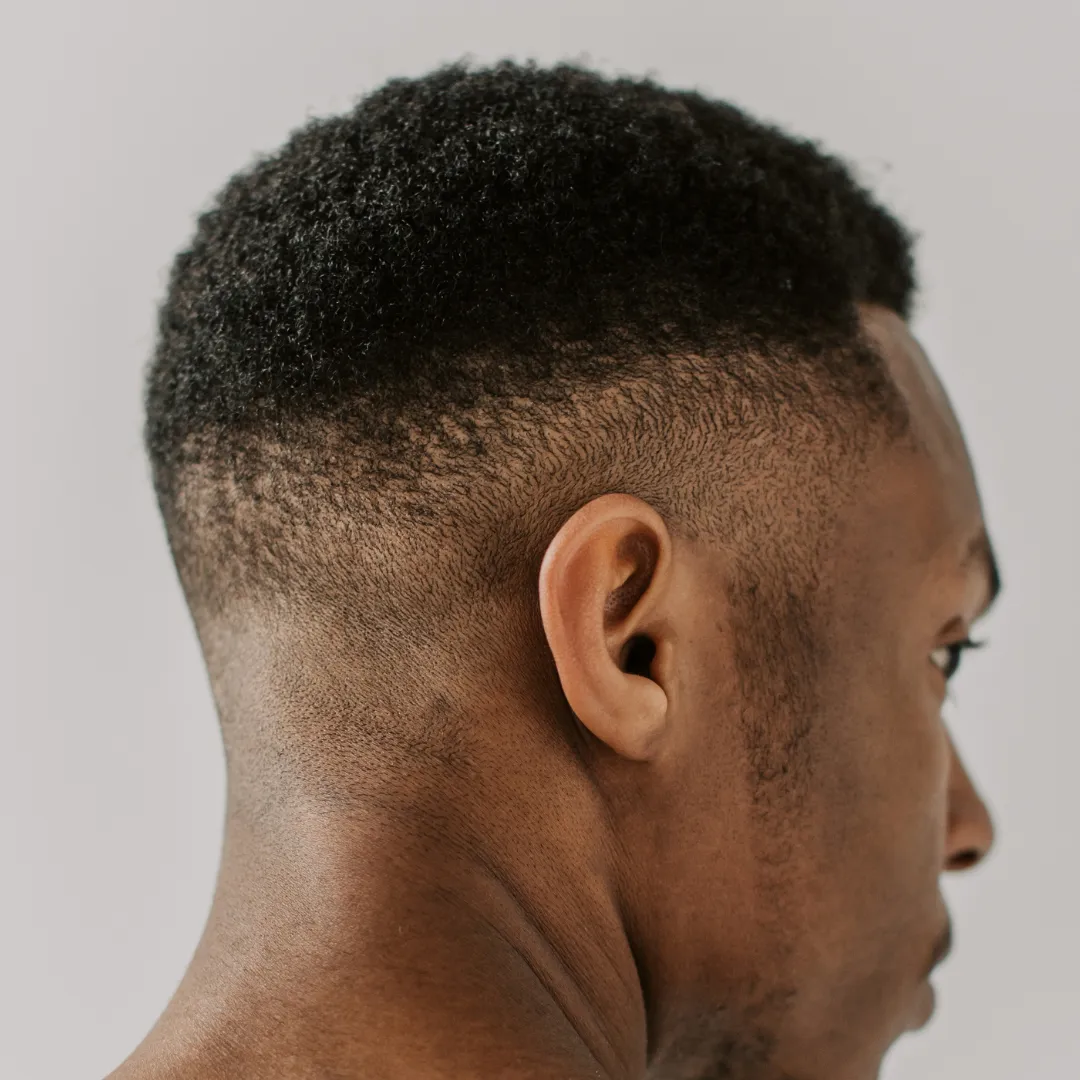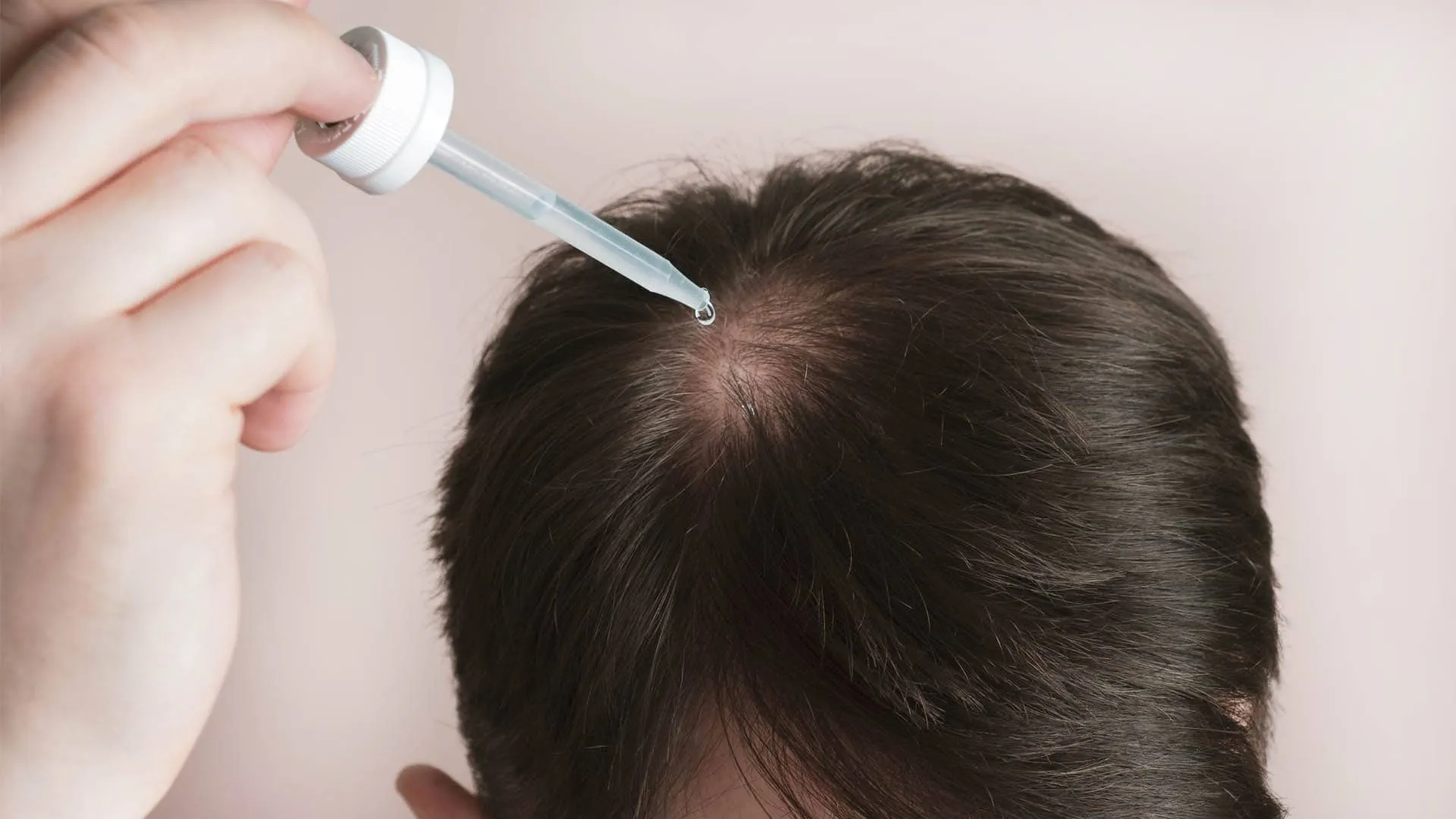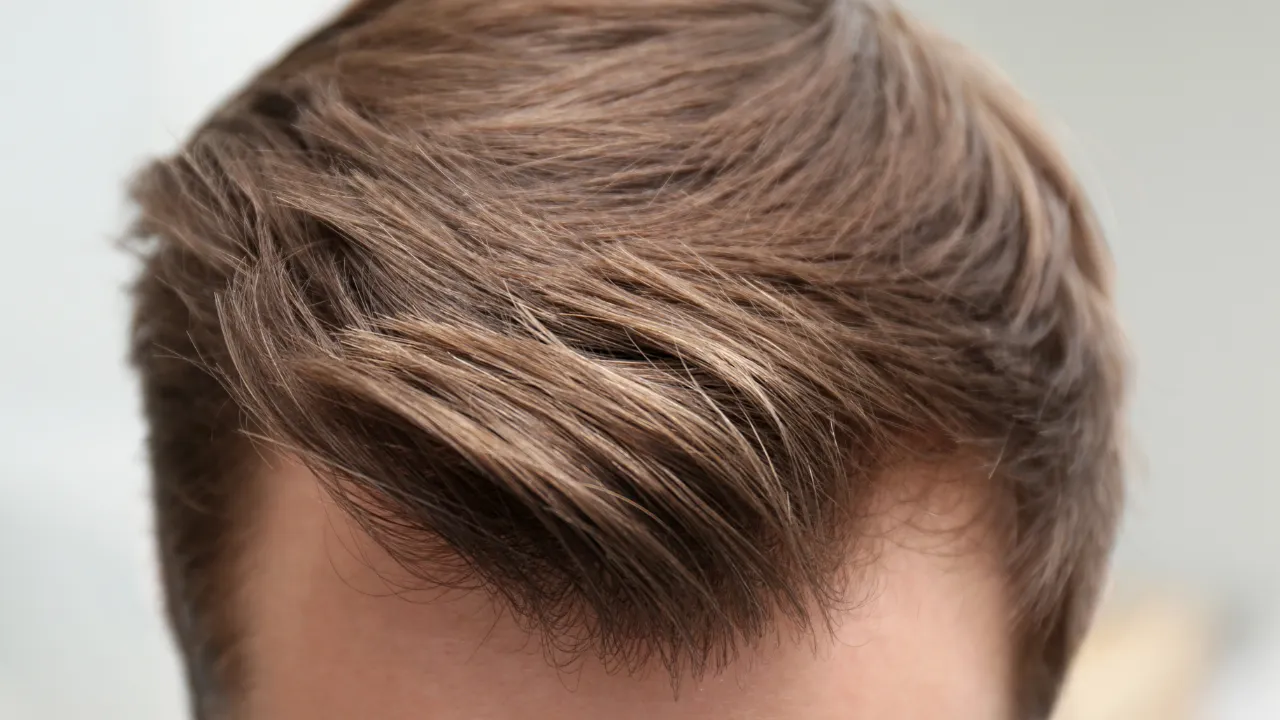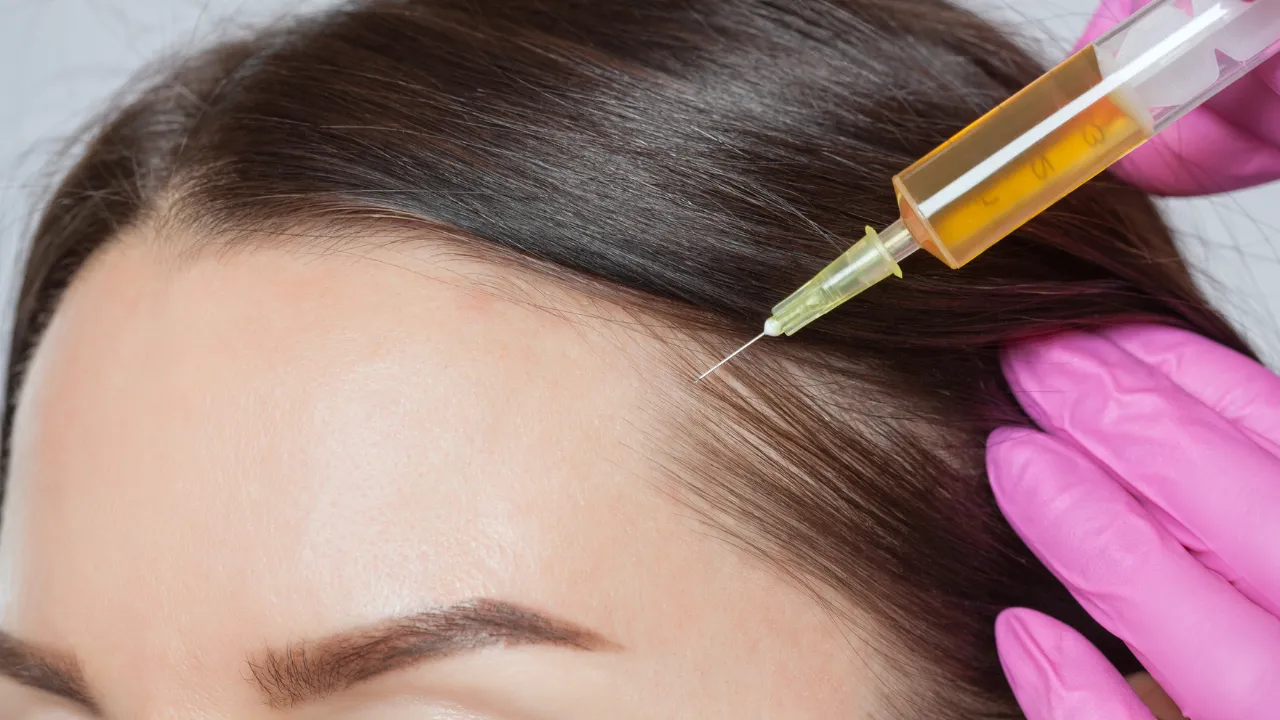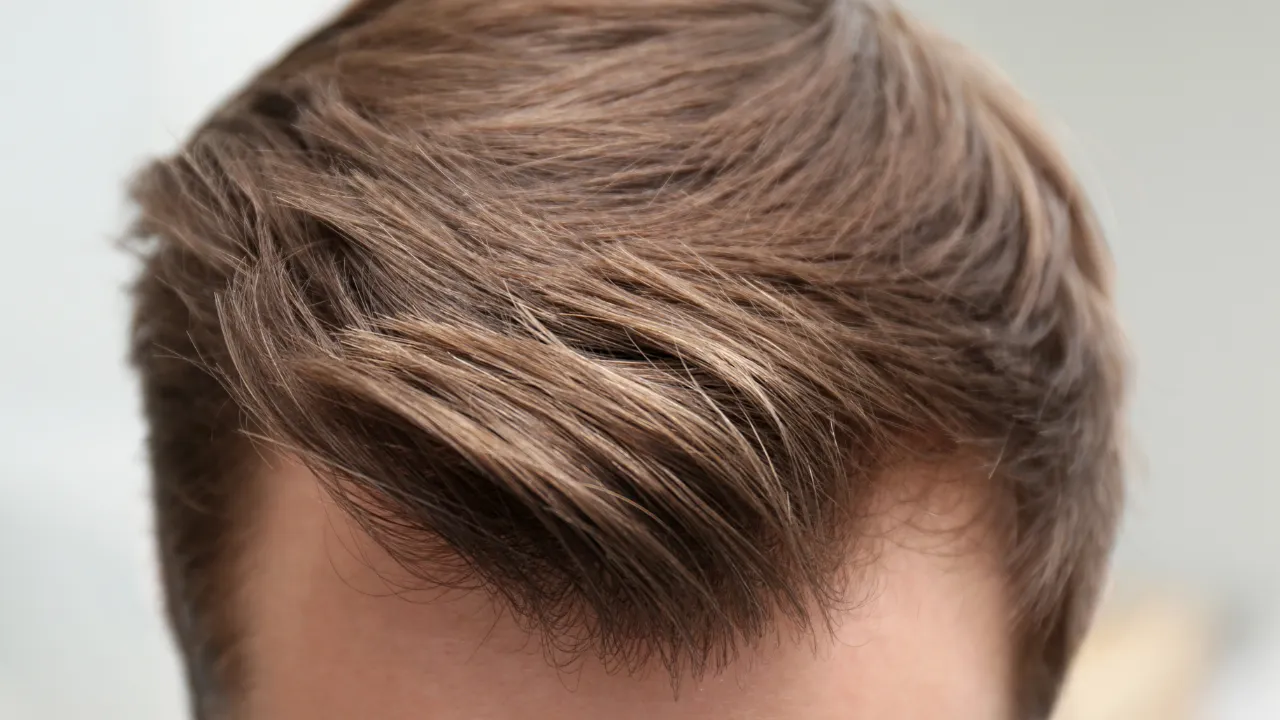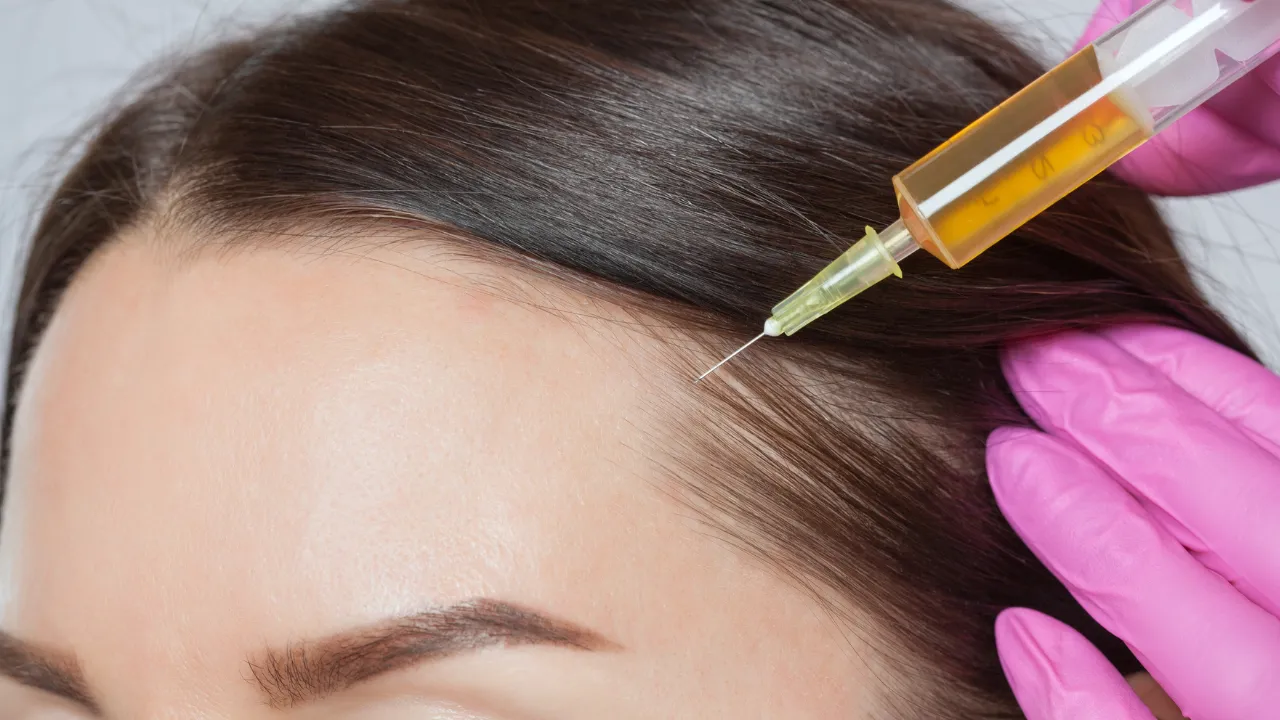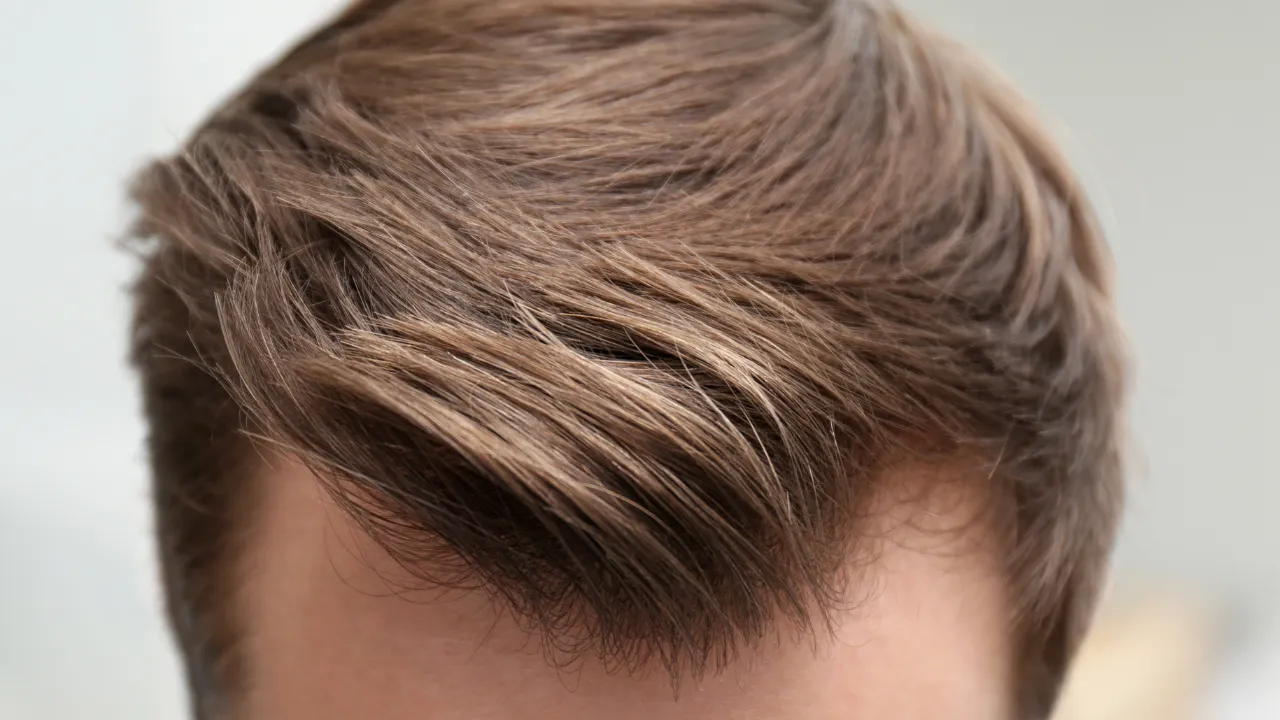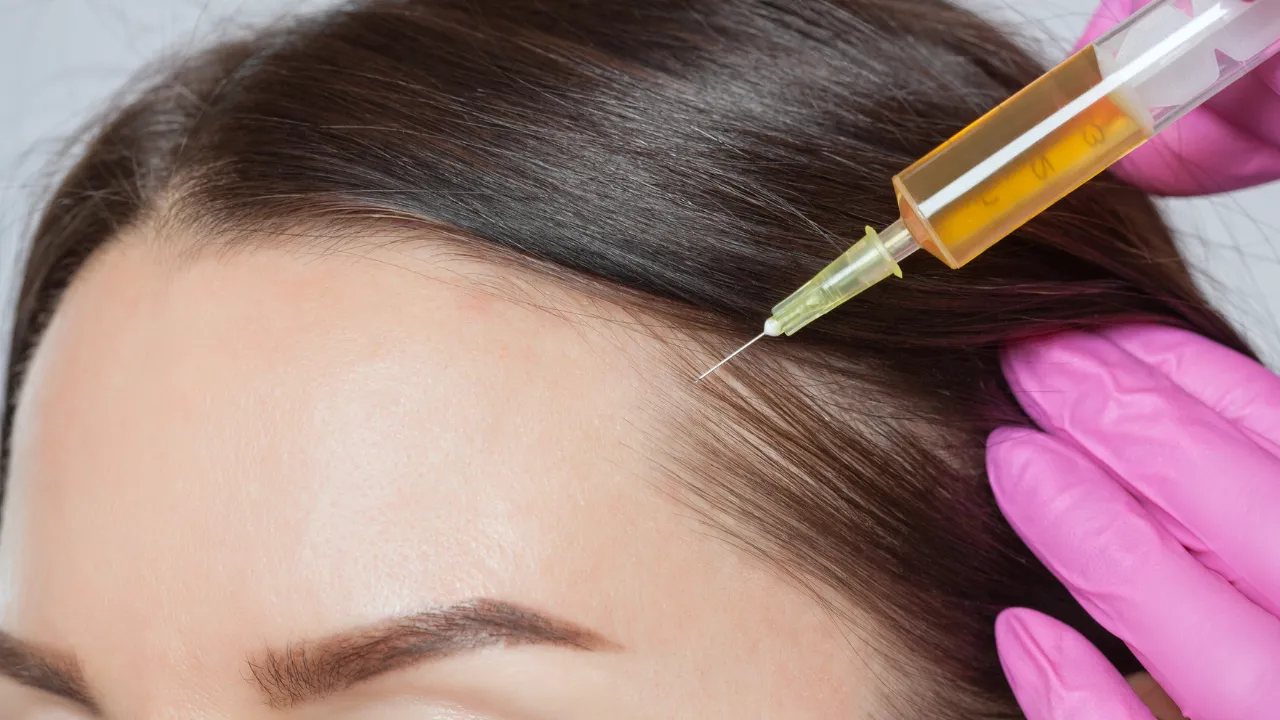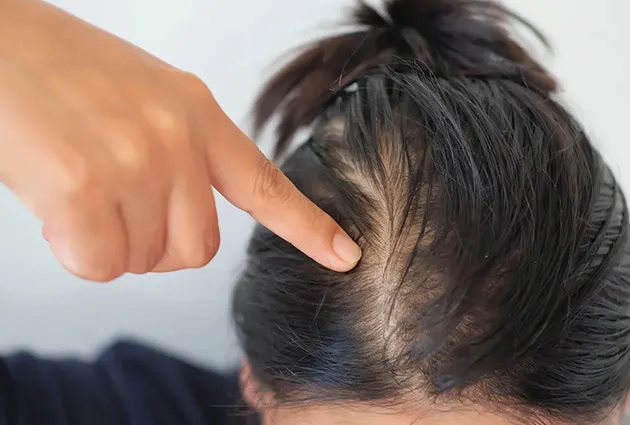Table of Contents
ToggleAt Kopelman Hair, we know that thinning hair on top in men is most often caused by genetics, age, or lifestyle factors. This type of hair loss usually starts at the crown or near the front hairline, and it can be managed with the right treatments and care.
Men with thinning hair on top have several options. From short haircuts that create the illusion of density to medical treatments like minoxidil, finasteride, and hair transplants, solutions exist to slow loss, encourage hair growth, and restore a fuller look.
Key Takeaways
- Thinning hair on top in men is caused by genetics, hormones, or lifestyle. Early signs include shedding, a receding hairline, and a visible scalp.
- Men can manage thinning with better hairstyles, hair products, or treatments like minoxidil, finasteride, PRP, and hair transplants.
- Finasteride helps up to 90% of men, while hair transplants give permanent results with over 90% success.
- Healthy food, scalp care, stress control, and early visits to a specialist can slow hair loss.
Causes of Thinning Hair on Top in Men
Genetics and male pattern baldness
The most common cause of thinning is male pattern baldness, also called androgenetic alopecia. It is passed down in families and linked to a hormone called DHT. Over time, hair follicles shrink, make finer hair, and stop growing. If your father or grandfather had pattern hair loss, you may face it too.
This form of hair loss usually starts at the temples or crown, near the top of your head. Over the years, thinning spreads across the scalp. Some men only lose hair at the front, while others see a bald crown.
Age and hormonal changes
Hair gets thinner as men age. After 30, many men notice less density. Hormones play a role, and changes in testosterone and DHT make the problem worse.
With age, follicles also rest longer between growth cycles. This slows down hair growth and makes new hair weaker.
Lifestyle and health factors
Daily habits affect hair health. A poor diet, smoking, stress, or little sleep can make thinning worse. Health issues like thyroid disease or vitamin shortages may also trigger loss.
In some men, the immune system attacks follicles, creating bald spots known as alopecia areata. This type of loss is different from genetic balding. It may come and go or affect both scalp and facial hair.
What does stage 1 balding look like?
Stage 1 is often easy to miss. The temples may pull back slightly, or the crown looks thinner under light. Many men think it is normal shedding, but it can be an early type of hair loss.
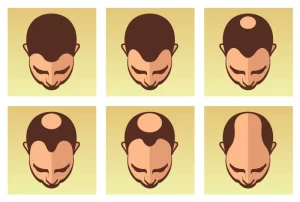
Noticing this stage matters. Treatments work best before large bald patches form. Acting early often means keeping more of your natural hair.
Early Signs of Thinning Hair in Men
Catching thinning early helps. Signs include more hair on pillows, in the shower, or in a comb. The scalp also starts to show more under bright light or in photos.
Other signs are a receding hairline or a wider part line. Sometimes men see patchy facial hair, which shows that follicles may be weak. Spotting these changes early makes treatments more effective.
Some men also feel itching, sensitivity, or dryness on the scalp. These symptoms can point to inflammation or blocked follicles. Keeping the scalp healthy supports better growth.
Haircuts and Hairstyles for Thinning Hair
Best haircuts for thinning hair on top in men
The right haircut can hide thinning. Short cuts reduce contrast between thin and thick hair. A crew cut or textured crop can create the illusion of thicker coverage. A good barber can use layers to add volume.
Adding texture helps break up thin spots. Cuts with short sides and slightly longer tops balance the look. These styles are easy to maintain and do not depend on thickness.
Male pattern baldness hairstyles
Some cuts work well with hair loss. A buzz cut is simple and clean. A fade blends short sides with thinning on top. If you keep longer hair, light products can help style it back without weighing it down.
Shaved styles also work for advanced loss. They look sharp and remove focus from thinning areas. Many men choose this option for confidence and ease.
Haircuts to avoid
Some styles make thinning worse. Long middle parts or heavy gel can show thin spots. A comb-over often makes hair loss more obvious. Avoid styles that need thick coverage in thin areas.
Overgrown styles can also highlight bald areas. Keeping hair trimmed and neat helps balance the look. Check out our guide on haircuts for balding men for looks that enhance your style while maintaining confidence.
Best Products for Men with Thinning Hair on Top
Products can help hair look thicker. Volumizing shampoos lift strands. Mousses or sprays add texture without clumps. Thickening fibers blend with hair to cover the scalp.
Shampoos with caffeine or biotin may boost scalp health. The best results come when products are used with a haircut designed for thinning. Small changes can make hair look fuller every day.
Some men also try tinted sprays or powders to reduce contrast between scalp and hair. These work well for events or photos. They do not treat the cause but give instant coverage.
Treatment for Thinning Hair on Top in Men (Options and Effectiveness)
Can thinning hair grow back in men?
Hair can grow back in some cases if caught early. Treatments that block DHT or boost follicles can improve thickness. Not all men see full regrowth, but many slow or stop thinning with treatment.
Medical treatments (minoxidil, finasteride)
Two common medicines to treat hair loss are minoxidil and finasteride.
- Minoxidil is applied to the scalp. It improves blood flow and helps weak follicles grow.
- Finasteride is taken by mouth. It lowers DHT and protects follicles.
Both need regular use. Stopping treatment usually brings back thinning. Each drug can have a possible side effect, so men should talk with a doctor.
Studies in the Journal of the American Academy of Dermatology show that finasteride slows pattern hair loss in most men. Minoxidil has FDA approval and is safe when used as directed.
Non-surgical solutions (PRP, low-level laser)
PRP therapy uses your own blood. Growth factors are injected into the scalp to help follicles. Low-level lasers also boost cells in the scalp. These options are safe and work best with other treatments.
Both are painless and can be done in short sessions. Results vary, but many men see better density within months.
Hair transplant surgery
For men with more loss, surgery is an option. At Kopelman Hair, Dr. Kopelman and his team move healthy follicles from the back of the head to thin areas. These hairs grow for life and look natural.
Dr. Kopelman is a board-certified hair surgeon with over 40 years of family skill. His work follows top medical standards to ensure safety and natural results.
Success Rates of Hair Loss Treatments
Results vary, but most treatments work for many men. Minoxidil helps 40–60% of users. Finasteride works for up to 90% of men, often keeping hair stable for years.
PRP shows success in about 70% of patients. Laser therapy helps some men in early stages. Hair transplants succeed in over 90% of cases and give permanent coverage.
Treatment Comparison Table
Daily Care and Prevention Tips
Styling products and techniques
Use light products to avoid weighing hair down. Volumizing sprays add lift. Blow-drying with a brush can create the illusion of fuller coverage. Handle gently – tight styles can damage follicles and lead to a condition called traction alopecia.
Nutrition and scalp health
Food plays a big role in hair health. Eat enough protein, iron, zinc, and vitamins. Drink water and add omega-3 fats for stronger hair. Wash and exfoliate the scalp to keep follicles clear.
How to prevent thinning hair in men
You may not stop all loss, but you can slow it:
- Lower stress with exercise or meditation.
- Stop smoking to improve blood flow.
- Treat scalp problems fast.
- See a specialist early.
These habits support healthy hair growth in the long run.
Additional Prevention Strategies for Men
Massaging the scalp helps blood flow to follicles. DHT-blocking shampoos may reduce the effect of hormones. Stress control, like deep breathing or fitness, is also helpful.
Quick treatment of dandruff or dermatitis reduces damage to follicles. These steps work best when paired with expert care. Prevention is easier than regrowth.
Building a daily routine around hair care also helps. Gentle washing, soft combs, and avoiding harsh chemicals can protect fragile strands.
Frequently Asked Questions
How long does it take to see results from treatments?
Is thinning hair always permanent?
Are hair transplants painful?
Can lifestyle changes alone stop hair loss?
What is the difference between alopecia areata and androgenetic alopecia?
Can hairstyles cause permanent hair loss?
When to See a Hair Specialist
Many men wait too long to seek help. Early visits improve results. If you see shedding, a thin crown, or a receding line, see a doctor.
Acting early may be the difference between short-term shedding and lasting loss. Scheduling a consultation with Dr. Kopelman at Kopelman Hair gives you the chance to discuss your options and choose the best plan for long-term results.


